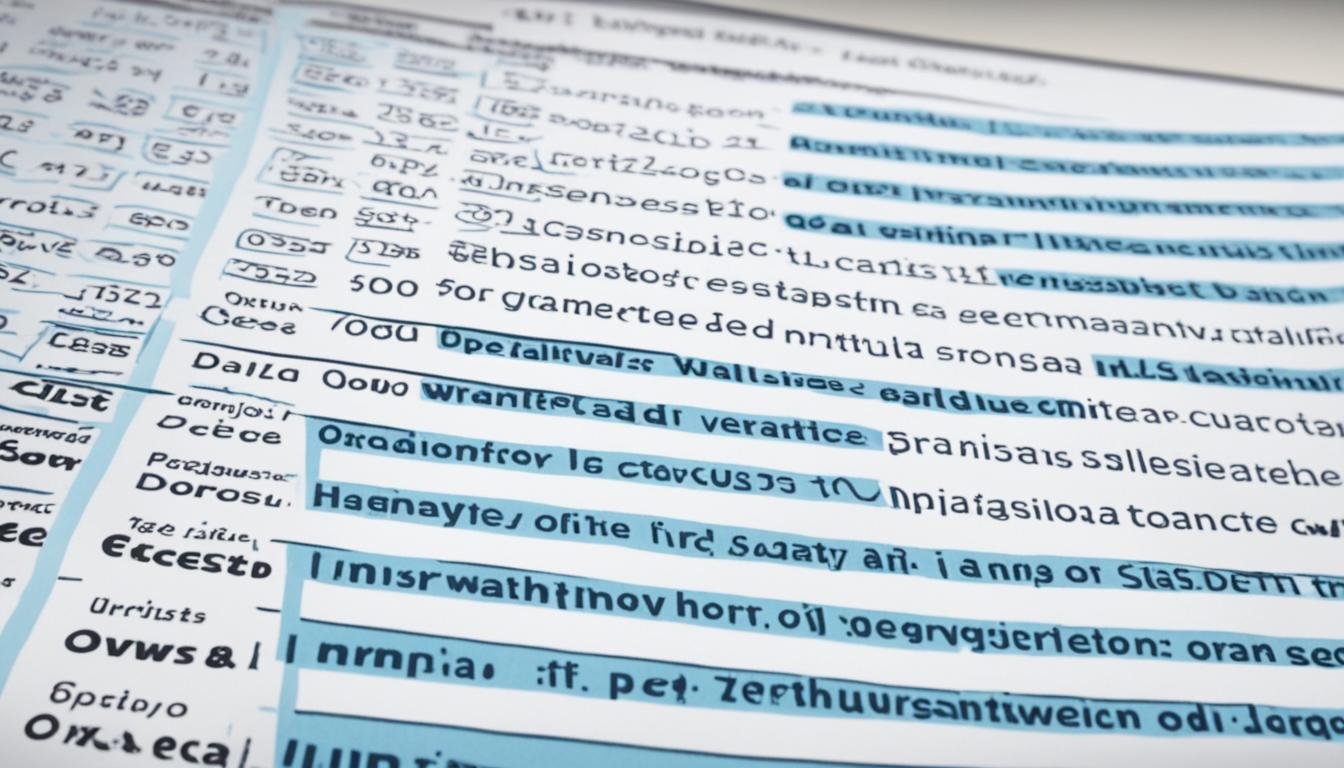A Guide to Human Resource Analytics
Human resource analytics, also known as HR analytics, is a powerful tool that enables HR professionals to make data-driven decisions and contribute strategically to the organization’s bottom line. By analyzing HR data, organizations can gain valuable insights into their workforce, identify trends, make informed decisions, and improve overall performance.
There are various types of HR analytics methods, each serving a different purpose. These include descriptive analytics, which focuses on summarizing and presenting HR data; diagnostic analytics, which aims to understand the causes of certain HR outcomes; predictive analytics, which uses historical data to forecast future HR trends; and prescriptive analytics, which provides recommendations for improving HR practices.
HR analytics involves collecting and interpreting HR data related to recruitment, employee performance, training, employee engagement, and more. By analyzing this data, organizations can better understand their workforce, optimize hiring processes, identify skill gaps, improve employee retention, enhance performance management, and align HR strategies with business objectives.
Implementing HR analytics requires organizations to have a solid foundation of data collection and management. HR professionals need to ensure that data is accurate, complete, and reliable. They also need to have the necessary analytical skills to make sense of the data and generate meaningful insights. Investing in HR analytics tools and technologies can streamline the data analysis process and facilitate data visualization and reporting.
Overall, HR analytics is a transformative tool that empowers HR professionals to make informed, data-driven decisions that positively impact the organization. By leveraging HR analytics, organizations can improve their workforce management, drive employee engagement and performance, and ultimately achieve their business goals.
Key Takeaways:
- HR analytics enables HR professionals to make data-driven decisions and contribute strategically to organizational success.
- There are four types of HR analytics methods: descriptive analytics, diagnostic analytics, predictive analytics, and prescriptive analytics.
- HR analytics involves collecting and interpreting HR data related to various aspects of workforce management.
- Implementing HR analytics requires accurate and reliable data, as well as analytical skills and the use of appropriate tools and technologies.
- HR analytics enhances decision-making, improves workforce management, and aligns HR strategies with business objectives.
What is Human Resource Analytics?
Human resource analytics, also referred to as HR analytics, is the practice of collecting and interpreting HR data to support evidence-based decision-making. It involves analyzing data related to hiring, recruiting, salary, and other HR processes to gain insights and improve workforce management. HR analytics helps organizations align HR initiatives with business goals, identify areas for improvement, and make data-driven decisions.
By leveraging HR analytics, organizations can effectively optimize their workforce, improve employee engagement, and streamline HR processes. The power of HR analytics lies in its ability to transform raw data into actionable insights, enabling HR professionals to identify patterns, trends, and correlations that can inform strategic decision-making.
“HR analytics plays a crucial role in helping organizations attract, hire, and retain top talent, ensure fair and competitive compensation practices, and create a positive and inclusive work environment.”
Key Benefits of HR Analytics
Implementing human resource analytics can bring numerous benefits to organizations:
- Make data-driven HR decisions: HR analytics enables organizations to base their strategies, policies, and practices on factual data and insights, rather than assumptions or gut feelings.
- Improve workforce planning: By analyzing HR data, organizations can gain a clear understanding of their current workforce composition, identify skill gaps, and develop effective strategies for talent acquisition and development.
- Enhance employee retention: HR analytics allows organizations to proactively identify factors that contribute to employee turnover and take steps to address them, reducing attrition rates and retaining top performers.
- Optimize recruitment processes: By analyzing recruitment data, organizations can identify the most effective sourcing channels, assess candidate quality, and refine their recruitment strategies to attract top talent.
- Identify training and development needs: HR analytics can reveal skill gaps and areas where additional training or development opportunities are needed, enabling organizations to design targeted programs and initiatives that enhance employee performance and engagement.
The utilization of HR analytics is not limited to these examples, but rather extends to various aspects of HR management, helping organizations unlock the full potential of their workforce.
Real-World Example: Analyzing Employee Performance
One practical application of HR analytics is in analyzing employee performance. By leveraging HR data analysis, organizations can assess individual and team performance metrics, identify high-performing employees, and recognize areas for improvement. This data-driven approach enables organizations to reward and incentivize top performers, provide targeted coaching or training to individuals who may be underperforming, and optimize team dynamics for increased productivity and collaboration.
For instance, a retail company may use HR analytics to analyze sales data and identify top-performing sales associates. With this information, the organization can develop incentive programs tailored to individual performance, resulting in increased employee motivation and higher sales figures.
Key HR Metrics Analyzed in HR Analytics
| HR Metric | Definition | Importance |
|---|---|---|
| Turnover Rate | The percentage of employees who voluntarily or involuntarily leave the organization. | Measures employee satisfaction, identifies turnover patterns, and helps in retention strategies. |
| Time-to-Fill | The average time it takes to fill a vacant position from the time it is opened to when an offer is accepted. | Helps identify recruitment process efficiency and impacts workforce planning. |
| Employee Engagement Score | A measure of the level of employee satisfaction, commitment, and motivation within the organization. | Indicates overall employee well-being, productivity, and likelihood of remaining with the organization. |
| Training Return-on-Investment (ROI) | An assessment of the effectiveness and value of training programs and initiatives. | Helps assess the impact of training on employee performance and organizational success. |
These HR metrics, along with many others, can provide invaluable insights for strategic HR decision-making, enabling organizations to optimize their talent management processes, foster employee engagement, and drive business success.
The Four Types of HR Analytics Explained
When it comes to human resource analytics, there are four primary types: descriptive analytics, diagnostic analytics, predictive analytics, and prescriptive analytics. Each type plays a crucial role in understanding HR data and extracting valuable insights that can inform decision-making. Let’s delve into each type to gain a comprehensive understanding of their applications:
1. Descriptive Analytics
Descriptive analytics involves analyzing historical HR data to gain a comprehensive understanding of past trends and patterns. By examining data related to employee demographics, performance metrics, and attrition rates, HR professionals can identify key insights and answer questions such as “What happened?” and “Why did it happen?” Descriptive analytics provides a foundation for understanding the current state of the workforce and identifying areas for improvement.
2. Diagnostic Analytics
Diagnostic analytics takes the analysis a step further by investigating the root causes of certain HR trends and outcomes. By drilling down into the data, HR professionals can uncover the factors that contribute to specific outcomes and identify the reasons behind the observed patterns. Diagnostic analytics answers questions such as “Why did it happen?” and “What are the driving factors?” This type of analysis enables HR professionals to gain deeper insights into workforce dynamics.
3. Predictive Analytics
Predictive analytics leverages historical HR data and statistical models to forecast future outcomes and trends. By identifying patterns and correlations within the data, HR professionals can make predictions about future employee behavior, performance, and attrition. Predictive analytics helps HR professionals answer questions such as “What is likely to happen?” and “What is the probability of an event occurring?” This type of analysis enables proactive decision-making and the development of targeted HR strategies.
4. Prescriptive Analytics
Prescriptive analytics takes HR analytics to the next level by providing actionable recommendations based on the insights gathered from descriptive, diagnostic, and predictive analytics. By analyzing multiple scenarios and considering various influencing factors, HR professionals can determine the best course of action to achieve desired outcomes. Prescriptive analytics answers questions such as “What should we do?” and “What is the best course of action?” This type of analysis empowers HR professionals to make data-driven decisions and optimize their HR strategies.
By utilizing these four types of HR analytics, organizations can gain a comprehensive understanding of their workforce, uncover valuable insights, and make informed decisions to drive organizational success.
Benefits of HR Analytics
HR analytics offers numerous benefits to organizations. By leveraging data-driven insights, HR professionals can:
- Enhance hiring practices by analyzing HR data to identify the most effective channels for attracting top talent.
- Improve employee experience and performance by identifying areas for development and providing targeted training.
- Reduce attrition rates by predicting potential turnover and implementing proactive retention strategies.
- Automate tasks and streamline HR processes, freeing up time for more strategic initiatives.
- Generate predictions and forecasts related to workforce management, enabling proactive planning and decision-making.
- Gain a centralized view of HR data, allowing for comprehensive analysis and better-informed decisions.
- Visualize data through charts, graphs, and dashboards, making it easier to communicate insights to stakeholders.
- Easily share HR analytics insights across the organization, facilitating collaboration and alignment.
HR analytics provides the foundation for data-driven HR decision-making, enabling HR professionals to drive organizational success.
How to Get Started with HR Analytics
Implementing HR analytics can significantly enhance your organization’s decision-making process and contribute to data-driven HR practices. To get started with HR analytics, follow these steps:
- Understand Existing Processes and Business Objectives:
Evaluate your current HR processes and identify key areas where data analytics can add value. Consider your organization’s strategic objectives and align HR analytics initiatives accordingly. - Identify Key Performance Indicators (KPIs):
Determine the metrics that are most relevant to your organization’s goals and objectives. These could include HR metrics such as employee turnover rate, time-to-fill vacant positions, or employee satisfaction. - Gather Accurate HR Data:
Collect comprehensive and reliable HR data from various sources, such as HR systems, surveys, performance records, and employee feedback. Ensure the data is accurate, up-to-date, and represents a comprehensive view of your organization’s workforce. - Analyze Data to Make Data-Informed Decisions:
Utilize analytics tools and software to analyze the collected HR data. Apply statistical analysis techniques to uncover insights, patterns, and correlations that can guide HR decision-making. - Track Progress with Relevant Metrics:
Continuously monitor and track the progress towards your organization’s HR goals. Use the identified KPIs to measure success, identify areas for improvement, and make data-driven adjustments to HR strategies and practices. - Share Insights with Stakeholders:
Generate reports and visualizations to communicate the findings and insights derived from HR analytics. Share these insights with management, HR teams, and other stakeholders to inform decision-making and drive organizational success.
By following these steps, your organization can unlock the power of HR analytics and leverage data-driven insights to optimize HR practices, improve employee engagement, and enhance decision-making at all levels.
Noteworthy Quote:
“HR analytics enables organizations to make informed decisions, leverage workforce data, and drive strategic HR initiatives that positively impact business outcomes.”
Challenges of HR Analytics and How to Overcome Them
While HR analytics offers great potential, organizations may face several challenges during the implementation and utilization of HR analytics. Overcoming these challenges is crucial to harnessing the power of data-driven HR decision-making. Some common challenges in HR analytics include:
- Lack of Data Quality and Integrity
- Data Privacy and Security Concerns
- Lack of Analytical Skills Among HR Professionals
- Resistance to Change
To overcome these challenges and successfully leverage HR analytics, organizations can adopt the following strategies:
- Invest in Data Governance and Quality Assurance Processes: Establish robust processes to ensure the accuracy, completeness, and reliability of HR data. Implement data cleansing and validation techniques to enhance data quality.
- Ensure Compliance with Data Privacy Regulations: Implement and adhere to appropriate data privacy and security measures to protect sensitive HR data. Establish data access controls and encryption protocols to maintain data confidentiality.
- Provide Training and Development Opportunities for HR Professionals: Enhance the analytical capabilities of HR professionals by offering training programs and resources focused on data analytics. This will equip HR professionals with the necessary skills to interpret and analyze HR data effectively.
- Communicate the Value and Benefits of HR Analytics: To overcome resistance to change, organizations need to articulate the value and benefits of HR analytics to all stakeholders. Illustrate how data-driven HR decision-making can lead to improved workforce planning, better talent management, and enhanced organizational performance.
By addressing these challenges head-on and implementing the necessary strategies, organizations can unlock the full potential of HR analytics and drive data-driven HR practices in their workforce management.
Real-World Examples of HR Analytics in Action
HR analytics is a powerful tool that can be applied in various real-world scenarios to drive organizational success. By harnessing the power of HR data analysis, predictive analytics, HR reporting, and HR metrics, organizations can gain valuable insights and make data-driven decisions that optimize their workforce and enhance overall performance.
Here are some real-world examples that showcase the practical applications of HR analytics:
-
Enhancing Hiring Practices
One of the key areas where HR analytics can be leveraged is in enhancing hiring practices. By analyzing recruitment data and identifying the most effective channels for attracting top talent, organizations can optimize their hiring processes. HR analytics can provide insights into the sources that yield the highest-quality candidates, enabling HR professionals to allocate resources strategically and attract the best-fit candidates for their organization.
-
Predictive Analytics for Employee Turnover
Predictive analytics in HR can forecast employee turnover by analyzing historical data and identifying patterns or indicators that contribute to attrition. By understanding the factors that lead to employee turnover, organizations can take preventive measures to address potential issues, improve employee experience, and increase retention rates. With predictive analytics, HR professionals can proactively implement strategies to retain valuable employees and mitigate talent loss.
-
HR Data Analysis for Training Needs
HR analytics can be used to identify training needs and improve employee performance. By analyzing HR data, such as performance records and employee feedback, organizations can identify skill gaps and training requirements. This enables HR professionals to develop targeted training programs that address specific needs and enhance the overall competency and productivity of their workforce.
Additionally, HR analytics enables organizations to track essential HR metrics that provide valuable insights for decision-making. Metric examples include time-to-hire, absenteeism rate, and revenue per employee. These metrics help HR professionals monitor key performance indicators and make data-driven decisions that align with the organization’s strategic objectives.
The application of HR analytics in these real-world examples demonstrates the power of data-driven decision-making in HR. By leveraging HR analytics, organizations can optimize their workforce, enhance talent management practices, and drive overall organizational success.
HR Analytics Tools and Technologies
Implementing HR analytics requires the use of various tools and technologies to effectively collect, analyze, and report HR data. The right tools can streamline HR processes, provide actionable insights, and support data-driven decision-making. Here are some essential tools and technologies for HR analytics:
- Human Capital Management (HCM) software: HCM software offers comprehensive HR data management capabilities. It enables organizations to centralize HR data from various sources and perform in-depth analysis. With HCM software, HR professionals can easily access and interpret data, identify trends, and make informed decisions.
- Data Visualization tools: Data visualization tools play a crucial role in presenting complex HR data in a visually appealing and easily understandable format. These tools transform raw data into interactive charts, graphs, and dashboards, allowing HR professionals to identify patterns, trends, and correlations intuitively. Popular data visualization tools include Tableau, Power BI, and Domo.
- Reporting software: Reporting software simplifies the process of creating HR reports and dashboards. It enables HR professionals to generate customized reports that showcase key HR metrics, such as employee turnover rate, time-to-fill, and performance ratings. Reporting software enhances HR reporting efficiency and accuracy, facilitating data-driven insights for strategic decision-making.
- Predictive Analytics platforms: Predictive analytics platforms utilize advanced algorithms and machine learning techniques to analyze historical HR data and generate accurate forecasts. These platforms enable HR professionals to predict future trends, such as attrition rates, performance outcomes, and workforce needs. By leveraging predictive analytics, organizations can proactively plan and implement HR strategies.
By leveraging these tools and technologies, organizations can harness the power of HR analytics to optimize workforce management, improve employee engagement, and drive business performance.
Example: Benefits of Data Visualization Tools
“Data visualization tools like Tableau have revolutionized the way we present HR data. With its interactive and user-friendly interface, HR professionals can easily create engaging visualizations that highlight key insights. These visualizations help us communicate complex data to stakeholders effectively, making it easier for them to understand and act upon the information.”
– Jessica Anderson, HR Manager at ABC Company
Conclusion
Human resource analytics, or HR analytics, is a transformative tool that enables HR professionals to make data-driven decisions and contribute strategically to organizational success. By leveraging the power of data, HR professionals can enhance hiring practices, improve employee performance and engagement, reduce attrition rates, automate tasks, generate predictions, gain a centralized view of HR data, and easily share insights across the organization.
Implementing HR analytics comes with its challenges, but with the right tools, technologies, and strategies, organizations can overcome these hurdles and reap the benefits of data-driven HR decision-making. Investing in HR analytics can provide a competitive advantage, allowing organizations to attract top talent, optimize workforce planning, and align HR initiatives with business goals. By using HR analytics, organizations can unlock valuable insights that drive efficiency, effectiveness, and employee satisfaction.
As we move into an increasingly digital and data-focused world, HR analytics has become an essential capability for HR professionals. It empowers HR teams to proactively address workforce challenges, make better-informed decisions, and demonstrate the value of HR to the organization. By embracing HR analytics, organizations can position themselves for long-term success and stay ahead of the curve in today’s rapidly changing business landscape.







